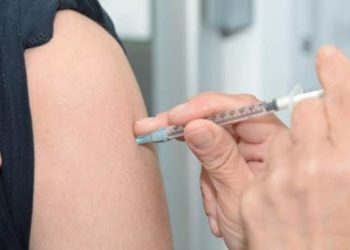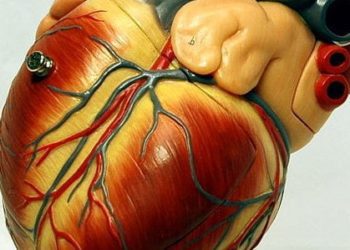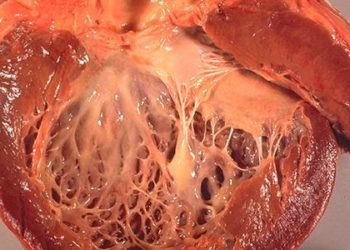Leadless pacemaker in wireless communication with subcutaneous ICD meets performance goals
1. In this prospective study, the use of a leadless pacemaker that received wireless communication from a subcutaneous implantable cardioverter-defibrillator (ICD) did not result in any pacemaker-related major complications.
2. In this study, there was successful communication between the leadless pacemaker and subcutaneous ICD, and maintenance of a pacing threshold for up to six months.
Evidence Rating Level: 1 (Excellent)
Study Rundown: Transvenous implantable cardioverter defibrillators (ICDs) have traditionally been used to treat life-threatening ventricular arrhythmias that can cause sudden cardiac death, but they are associated with lead-related complications such as conduction failure, insulation breakdown, and infection. To address these issues, subcutaneous ICDs were developed, offering a safer alternative, though they cannot provide prolonged bradycardia pacing or anti-tachycardia pacing therapy, making them unsuitable for patients requiring anti-tachycardia pacing. This prospective study evaluated the safety and performance of a subcutaneous ICD in wireless communication with a leadless pacemaker in patients at risk for sudden cardiac death and the need for anti-tachycardia pacing. Patients underwent implantation of the modular system and were monitored for six months, with safety measured by freedom from major pacemaker-related complications and performance assessed by successful device communication and a pacing threshold of ≤2.0V at a 0.4-millisecond pulse width. The majority of patients remained free from complications, device communication was successful in most cases, and pacing thresholds were met, with all endpoints exceeding prespecified performance goals. However, the single-group design limited the study to performance assessment without establishing efficacy.
Click here to read the study in NEJM
In-Depth [prospective cohort study]: This prospective, single-group clinical study assessed the safety and performance outcomes of a subcutaneous ICD in wireless communication of a leadless pacemaker. Adult patients at high risk for monomorphic ventricular tachycardia who had indications for an ICD implantation and had a preexisting subcutaneous or transvenous ICD that was to be extracted were eligible for this study. Patients who required pacing at baseline, had chronotropic incompetence or required pacing for ventricular dyssynchrony were excluded from participation. A total of 293 patients were enrolled in this study and received implantation of a modular pacemaker-defibrillator system. Patients were then followed for six months after implantation. The safety endpoint was freedom from leadless pacemaker-related major complications and was evaluated against a performance goal of 86%. The two primary performance endpoints were successful communication between the pacemaker and ICD, with a performance goal of 88%, and a pacing threshold of up to 2.0V at a 0.4-msec pulse width, with a performance goal of 80%. In total, 162 patients made it to the six-month endpoint cohort and 151 patients completed the six-month follow-up period. Results from this study found that 97.5% of patients were free from leadless pacemaker-related major complications. Additionally, 98.8% of patients had successful wireless device communication. Of the 151 patients in the six-month follow-up period, 147 (97.4%) had pacing thresholds of 2.0V or less. In total, 61.3% of arrhythmia episodes were successfully terminated by antitachycardia pacing. All the endpoints exceeded the prespecified performance goals. Overall, results from this study found that the modular pacemaker-defibrillator system met and exceeded the prespecified goals for safety and performance.
Image: PD
©2024 2 Minute Medicine, Inc. All rights reserved. No works may be reproduced without expressed written consent from 2 Minute Medicine, Inc. Inquire about licensing here. No article should be construed as medical advice and is not intended as such by the authors or by 2 Minute Medicine, Inc.









